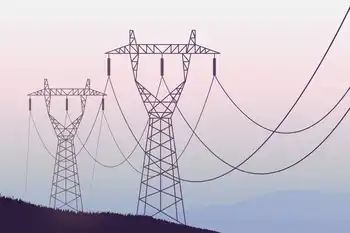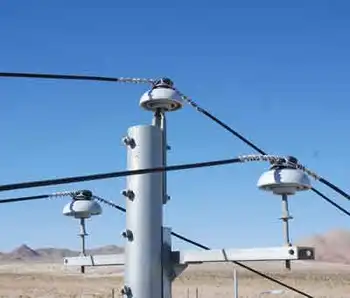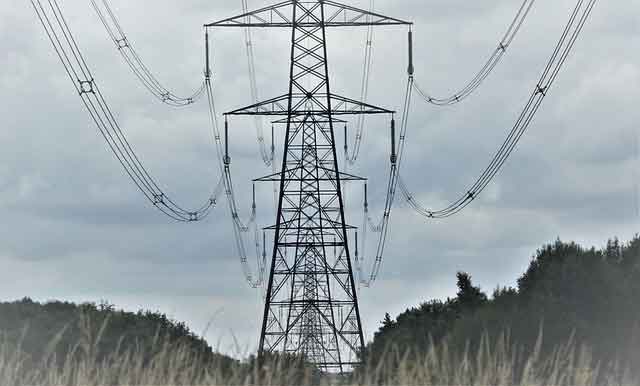Electric heating on the increase in Maine
Using modern technologies, electric heaters could soak up excess energy from wind turbines and tidal generators spinning on cold winter nights while most Mainers sleep. This next form of electric heat would help stabilize a power grid increasingly being designed for renewable energy, supporters say, while reducing the state's dependence on heating oil.
That's the promise of electric thermal storage, which absorbs electric energy generated during off-peak hours and releases it as heat when people need it. Electric thermal storage isn't an untested idea. It's common in Europe and growing in Canada. A limited number of thermal storage room heaters were sold in Maine during the 1990s. But the potential to build massive wind parks off the New England coast and the push for interactive, "smart" power grids and meters are combining to offer a fresh role for electric thermal storage.
The effort in Maine is being led by four influential business people: Sam Zaitlin, a pioneer in Maine's recycling industry; David Flanagan, who served as Central Maine Power Co.'s chief executive from 1994 to 2001; Arthur Adelberg, a former senior vice president at CMP; and Adam Cote, a former Democratic candidate for Congress.
Their company is called Renewable Energy Storage of Maine. It's now the sole distributor in Maine of electric storage heaters made by North Dakota-based Steffes Corp., the country's only manufacturer.
The partners have been meeting for months with state officials, utilities and university researchers to make their case for electric thermal storage. They're also talking with companies to distribute and install the equipment, it is hoped starting this winter.
In recent days, though, their plan has run into unexpected hurdles.
Electric thermal storage must compete with conventional heat – namely fuel oil and natural gas – to attract customers. That means negotiating discounts with independent power suppliers for off-peak rates, preferably through long-term contracts. But oil and gas prices are so volatile today that New England power generators seem unwilling to offer a time-of-use rate over a long period, Zaitlin said.
The company is exploring other options, including marketing in states that, unlike Maine, have utilities that both generate and deliver power. Roughly two-dozen states have energy rates that encourage electric thermal storage. If Maine develops a large amount of wind, tidal and solar generation, Zaitlin said, it must find a way to absorb the intermittent power for when it's needed.
"You're really going to need the storage capacity," he said. "Where does it come from?"
One strategy is being studied in Wiscasset. Riverbank Power Co. is considering whether to build a $2 billion underground pump storage facility. It would use river water to generate power during the day. At night, electricity would come from wind farms and other renewables.
By contrast, Renewable Energy Storage's approach is more decentralized. It essentially turns thousands of homes and commercial buildings into battery packs.
Basic room units look like typical heater cabinets. Inside are high-density ceramic bricks clad in heavy insulation. Electric coils warm the bricks during hours that utilities have little demand for power. The bricks can absorb vast amounts of heat, a process controlled automatically based on heating demand and outside temperatures. A thermostat and fan control and deliver the heat as needed.
Room heaters that could supplement an existing oil furnance cost $2,000 or so, installed. The technology also is used in central heating systems, with prices in the $8,500 range. Larger systems can heat schools and offices.
Electric storage heat is an appealing idea for Maine, according to Calvin Luther, senior business development analyst at Bangor Hydro Electric Co. The utility's parent company, Emera Inc., promotes them in Canada through its Nova Scotia Power subsidiary.
Bangor Hydro and Central Maine Power Co. sold Steffes storage heaters in the 1990s. They installed special meters at homes and businesses that monitor how much power is used at different hours. Both utilities still offer discounted rates in their delivery charges, less than 2 cents per kilowatt hour.
But the programs never got much traction, Luther said.
"Oil prices were so low, virtually no one bought them," he said.
Today, he said, people realize oil prices could shoot up again. But without a time-of-use energy rate that competes with oil, it would be hard for Bangor Hydro to market the concept.
Renewable Energy Storage partners won't publicly discuss what they think that rate needs to be. Through a bid process administered by the Maine Public Utilities Commission, almost all CMP's home and small-business customers now pay roughly 9 cents per kilowatt hour for energy. Electric storage needs a lower, stable rate that competes with fossil fuels on a heat-equivalent basis, Flanagan said.
"You can't have electric rates as volatile as oil and natural gas," he said.
Another possible incentive is emerging to reintroduce storage heat in Maine: The technology could get a boost from energy policies supported by the Obama administration.
The government's economic stimulus program contains money to encourage regions to develop "smart" transmission grids that use technology to lower costs and increase reliability.
Matching grants are available for demonstration projects, and electronic storage heat can qualify, according to Mohamad Musavi, who chairs the University of Maine's electrical and computer engineering department.
Maine still lacks the vast, off-peak renewable generation that would make storage heat desirable for grid stability. But the need will develop over the next decade, Musavi said, if coastal wind parks and other large projects come on line. A pilot study involving the private sector and the university, Musavi said, could act as a baseline to study efficiencies and costs.
"Storage becomes important for implementation of a smart grid," he said.
Related News

Ontario Teachers' Plan Acquires Brazilian Electricity Transmission Firm Evoltz
TORONTO - The Ontario Teachers’ Pension Plan has acquired Evoltz Participações, an electricity transmission firm in Brazil, from US asset manager TPG.
The retirement system took a 100% stake in the energy firm, Ontario Teachers’ said Monday. The acquisition has netted the pension fund seven electricity transmission lines that service consumers and businesses across 10 states in Brazil. The firm was founded by TPG just three years ago.
“Our strategy focuses on allocating significant capital to high-quality core infrastructure assets with lower risks and stable inflation-linked cash flows,” Dale Burgess, senior managing director of infrastructure and natural resources at Ontario Teachers, said…




